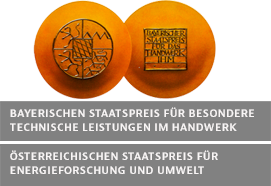Save 50% on heating costs
Owners of workshops and halls often wonder what is the best way to heat their hall or workshop. The choice is wide and everyone wants to find the optimal solution for their space. Important issues in the selection process are: Hall size, construction method, fuel, price, maintenance requirements, quality, efficiency, consumption and many more. In this article, owners of halls and workshops should get a better overview of the advantages and disadvantages of each option.
Working temperature: In most craft stores, the working temperature is between 15 and 16 °C. How warm the heating must be set depends on the selected heating system. If the heat comes from above, the head area of the workshop is heated first. However, people perceive heat much more strongly through their feet and lower body, which is why ceiling fans and heaters that heat from above often have to be set to higher temperatures. If the heat is released at the bottom of the room, 16 degrees already feels very warm.
Functions: It is important for halls and workshops that the heating functions quickly, economically and efficiently. Furthermore, it is important that the working temperature is quickly reached again when the doors are opened and closed frequently, or that the openings and closings are compensated. If the temperatures in the workshop or hall fluctuate frequently, underfloor heating and ceiling fans in particular have problems compensating for this.
Mobility: The fact that a workshop heater is mobile only plays a role if the workshop/hall is rented and the heater can be taken along when moving. Normally, the heater is connected to a fixed location and fits in as part of the inventory of a workshop or hall. Mobility of a heater plays a greater role primarily on assembly and construction sites.
Construction/shape: In workshops and halls, every square meter counts. The heating system must be small, compact and efficient.
Frugality: Reducing fixed costs is the task of every business. Companies with workshops and halls are also concerned about keeping these costs as low as possible. Therefore, the economy of heating for halls and workshops is of great importance.
Efficiency: The efficiency describes the ratio of resources used (electricity, fuel oil, gas) in relation to the heat released.
Ceiling fans lose efficiency especially in the ducts and in the cooler itself. Also, the fact that warm air rises and ceiling fans, as the name suggests, hang from the top of the ceiling, and thus the warm air has to be transported downwards with a lot of effort, reduces the efficiency. It is around 30-40% for ceiling fans.
Radiators have an efficiency of about 20%.
Standard fan heaters have an efficiency of approx. 55-60 %.
Rely on Puls-air 's 97% efficiency fuel oil fired heaters
CO2 economy: Basically, less consumption = less CO2, if you compare, for example, with ceiling fan the exhaust pipe a conventional fan burner with the same power but poorer efficiency. Climate neutrality would be the optimal solution here. For this, however, the electricity would have to be self-generated and underfloor heating would have to be used. For most workshops and hall owners, this is not feasible in terms of cost. Therefore, the alternative should be as economical as possible.
Sustainability: A heating system for halls and workshops is something for a longer period of time. Care should be taken not to focus on the purchase value, but to calculate how heating costs and maintenance costs for the heating system will develop in the future.
Quality: In 2021, quality often also means sustainability. Products from the Far East are to be avoided
Explanation: In the oil heater fan, fuel oil is burned in a combustion chamber, generating heat that is blown through a fan into a room to be heated.
Advantages:
Disadvantages:
Explanation: Underfloor heating involves laying hoses on the floor slab, which are then heated with hot water.
Advantages:
Disadvantages:
If only gas connection may be used or if a gas connection is available. Currently, there are already countries that have said goodbye to fuel oil for years. But the EU also no longer wants gas, but only as above, for example, heat pump floor concepts.
Heating with oil, in principle, can not be excluded for anyone. One advantage is when there is an existing tank. With heating oil you are flexible and can achieve very good heating results.
For smaller craft workshops under 100 m³.
If you think physically, a ceiling fan never makes sense because you have to move the warm air down against physics.
In combination with photovoltaics (electricity for heat pump) a very clean and ecological solution. Only unfortunately for many workshop and hall owners much too expensive.
Up to 10,000 m3³ oil or gas-fired fan heater, anything above that with underfloor heating, photovoltaic and heat pump.
We will gladly advise you +435358 3600

Request information material:
Operating instructions, folder, data sheet
Imprint | AGB & Data protection | order form as PDF | Online order form | contact us | Instruction manual
Puls-air heaters | Innsbruckerstraße 10 | A-6353 Going am Wilden Kaiser
Contact GER, CH, ITA: 0043 5358 3600 | info@pulsair.net
Contact AUT: 0043 6642015883 | austria@pulsair.net
Puls-air heaters | Innsbruckerstraße 10 | A-6353 Going am Wilden Kaiser
Contact: GER, CH, ITA:
Contact AUT: